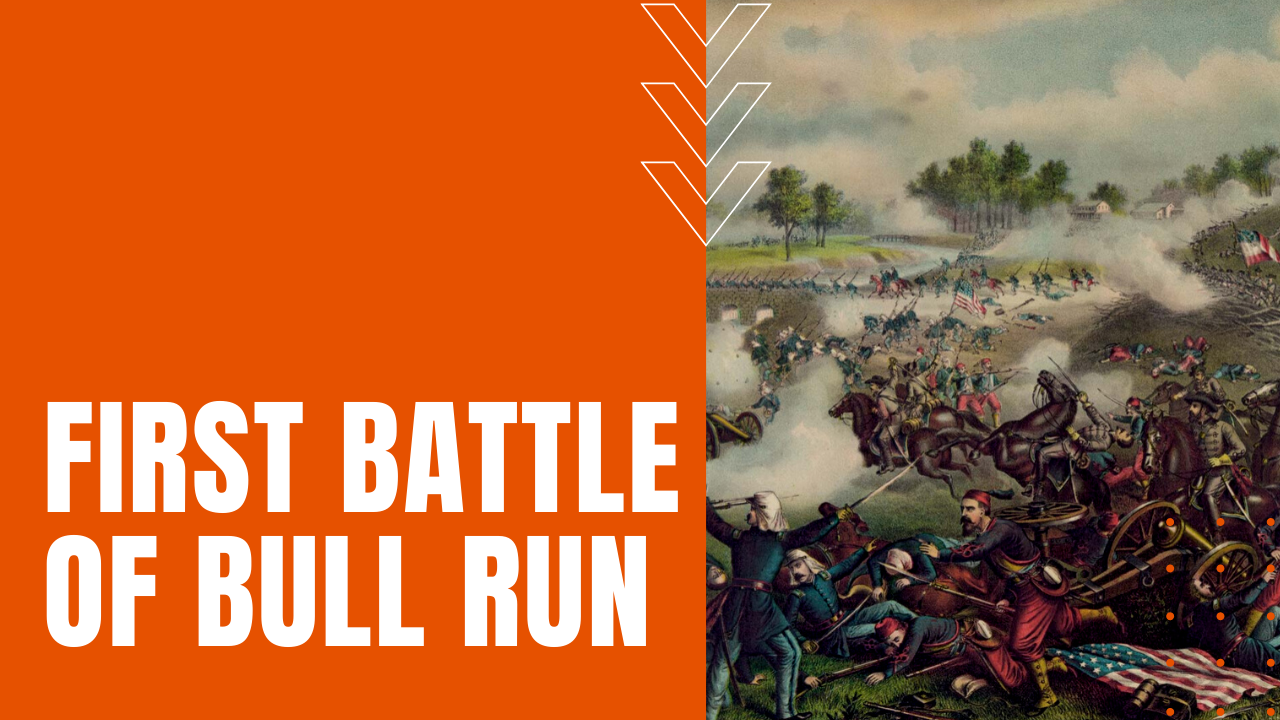First Battle of Bull Run

By July of 1861, two months after Confederate troops ignited the Civil War by attacking Fort Sumter, the north grew eager for the Union Army to make an advance on Richmond before a planned meeting of the Confederate Congress on July 20th. Early victories by the Union Army in western Virginia gave encouragement to the northern press and public alike, prompting Abraham Lincoln to order Brigadier General Irvin McDowell to mount the first-strike offensive on the enemy, with the intent of clearing rebel defensive positions for a direct assault on the Confederate capital of Richmond, ushering in an early and merciful end to the war.
Battle of Bull Run
The offensive would begin with an attack on more than 20,000 Confederate troops under the command of General P.G.T. Beauregard, who were bivouacked near Manassas Junction, Virginia—some 25 miles west of Washington, D.C.—along a little river known as Bull Run.
Overly cautious by nature, McDowell commanded 35,000 Union troops gathered in the District of Columbia, and knowing his men were undertrained at such an early chapter in the war, he urged Lincoln to postpone the order to give his men additional time to train. Lincoln refused to acquiesce, reasoning correctly that the rebel army possessed an equal lack of training, prompting McDowell to begin a slow march out of Washington on July 16th.
When Beauregard was advised about the Union troop movement by a network of Confederate spies in the District, he called on fellow Confederate General Joseph E. Johnston for reinforcements, who in turn outmaneuvered a Union Army position in the Shenandoah Valley, pivoting his 11,000-man army toward Manassas.
McDowell’s Union force struck on July 21st, shelling the enemy across Bull Run, while more troops crossed the river at Sudley Ford in an attempt to hit the Confederate left flank.
Who Won the First Battle of Bull Run?
Over a two-hour engagement, 10,000 Union troops gradually pushed back 4,500 rebels across the Warrington turnpike and up Henry House Hill, prompting onlooking reporters and congressmen to call a premature victory for the Union side. Instead, reinforcements from Johnston and Beauregard’s commands arrived at four o’clock in the afternoon, and when Beauregard called for a counterattack, the rebels handily pushed the Union Army back toward Washington. Considered the first major land battle of the Civil War, The First Battle of Bull Run saw 3,000 Union casualties and 1,750 on the Confederate side, beginning a four-year blood bath that would cost the lives of 620,000 Americans.
